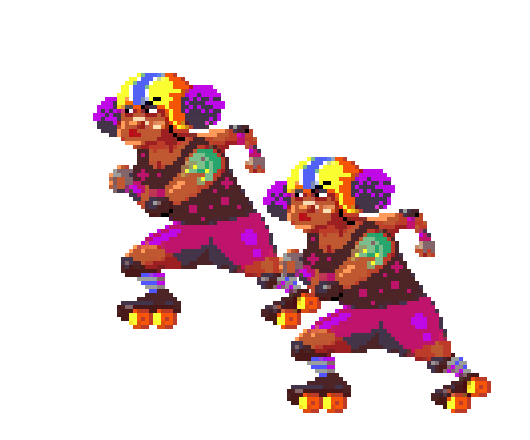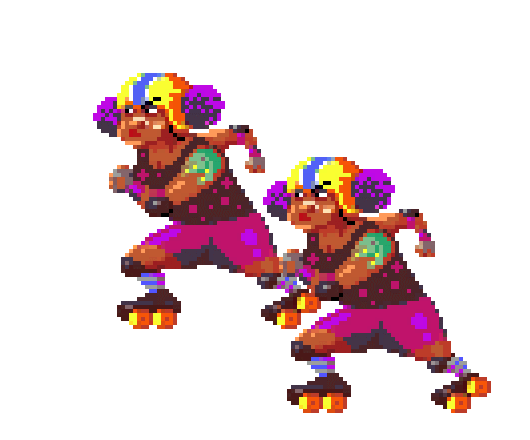A resolution independent pixel perfect camera for Unity.
This package simplifies making a Unity camera render to exact pixel units, for use with pixel art or similar art styles where blockiness is part of the aesthetic.
- Simple setup
- Experimental perspective camera support
Standard unity camera
Pixel perfect camera
Clone the repository or download the UnityPackage of the latest release. The PixelCamera directory can be moved to your location of choice in your unity project.
- Attach the
Pixel Camerascript to an existing camera. - Set
Pixels Per Unitto an appropriate value, usually matching the settings used for your assets. - Set the
Zoom Levelfor the camera.
- Camera Material - A material applied to the camera output, allows shaders to modify the image. The camera output is set as the
_MainTexof the material. - Aspect Stretch - Apply a stretch to the output, allows the display to be non square pixels.
- Down Sample - Scales down the render resolution, making the output blockier.
- Perspective Z - Only for perspective cameras. The Z distance between the near and far clip planes, that is rendered as pixel perfect.
- If a camera or sprite is out of alignment with the pixel grid, unwanted artifacts may occur.
- Pixel Camera will not automatically zoom in or out according to the window/viewport size.
- Camera
Viewport Rectsettings are not taken into account.
- A zoom level below 1 will leave a border on the edge of the screen.
- Perspective camera is unoptimized. A high
Field of Viewsetting will generate unreasonably large RenderTextures. Use with caution.
Pixel camera takes the size of the screen and finds the render size required to cover the screen in a pixel perfect manner, at the given settings.
A RenderTexture of the calculated render size is created, and if needed the camera settings are modified so the render fits the calculated size.
The camera output is sent to the RenderTexture.
A dummy camera that renders nothing is created, and the OnPostRender() function is used to draw the output of the attached camera onto the screen using GL commands.
ZoomLevel : float
The pixel zoom scale used by the camera.
PixelsPerUnit : float
The pixels per unit value used by the camera.
CameraMaterial : Material
The Material used to render the camera output, setting to null will use the default material. Pixel Camera sets the camera output as the _MainTex texture of the given material.
AspectStretch : Vector2
An additional stretch applied to the camera, allows camera to render as non square pixels.
DownSample : float
Scales down the render resolution, makes the output blockier. Minimum value is clamped at 1.
PerspectiveZ : float
With a perspective camera, the distance between the camera near and far planes that is rendered as pixel perfect. Value is clamped between the near and far plane values.
RenderTexture : RenderTexture, read only
Access the RenderTexture used as the camera output.
CameraSize : int[], read only
Actual pixel size of the camera, as an integer array.
ForceRefresh() : void
Force the camera to recalculate rendering sizes.
CheckCamera() : bool
Checks camera settings. If different from the last camera settings used, camera will be setup again. Returns true when settings have changed.

